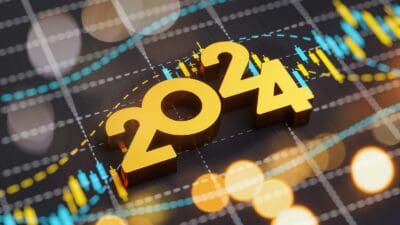Many inexperienced investors consistently make the same mistake when contemplating an investment.
Typically, they go for familiar names, and rarely probe further than a quick consideration of the price-earnings (P/E) ratio, the yield, and a recent share price chart. Time and again, you can see this tunnel vision in action.
It’s not difficult to see why, of course. There’s a sense of comfort that comes from familiar names, often because we feel that we understand the company and its business model better. Moreover, ‘buy what you know’ (and similarly, ‘avoid what you don’t know’) is an approach that has famously found favour with veteran investors such as Warren Buffett and Peter Lynch.
Likewise, P/E ratios and yield figures are widely published, and not difficult to understand. Furthermore, at their simplest, they directly address two questions that are vital for investors: is a given share cheap (or expensive), and – especially for income investors – what level of income can be expected?
Faulty facts
The trouble with all this is that it’s a fairly simplistic approach to investment selection. Granted, simplicity has advantages, and complexity disadvantages – but even so, there are dangers in taking such a limited view of potential investments.
‘Buying what you know’, for instance, not only excludes vast numbers of businesses that don’t engage directly with the average consumer, but also tends to lead to a very focused (and potentially vulnerable) investment pool of consumer-facing stocks, in industries such as banking, retailing, and consumer products and services.
Similarly, P/E and yield figures can also provide a false sense of security. Historic yield figures, for instance – which are the ones that investors most frequently encounter – take no note of a business’s future dividend prospects: a company might have announced the suspension of its dividend, yet the quoted yield will still include the last year’s (now irrelevant) dividends, with the resulting yield probably also exaggerated by a fallen share price.
P/E ratios are not only prone to similar issues, but are also vulnerable to misinterpretation. Is the P/E high, for instance, because the denominator (earnings) has fallen, or because the numerator (price) has risen? Without knowing, you’re really no wiser.
So what else might an investor look at?
There’s no shortage of possibilities. Companies’ investor websites, popular online data sources, companies’ annual reports – there’s a wealth of data out there.
And, as I’ve said before, I’m old enough to remember a very different world, in which that wasn’t the case. Compared to now, for instance, investing during the 1970s and 1980s took place in something of an information vacuum. Annual reports had to be requested in print, arriving in the post, and the average investor had little more than the share listings in the Financial Times and Daily Telegraph for figures such as P/E ratio and yield.
So given the wealth of information that is available – and available for free, what’s more – it seems crazy not to make better use of it.
Three things that I tend to look at
Debt is an obvious red flag. Some level of debt isn’t a problem, as it provides the business’s shareholders with leverage – personally, I’m not a big fan of total debt avoidance.
As with any other ratio, gearing figures come in various forms, and need careful interpretation. But for a more rough-and-ready approach, just look at the total level of debt, whether it is going up (or hopefully, down), and whether it is for a very justifiable reason (expansion, say, or a recent acquisition).
Outsized pension obligations are another warning sign, such as a pension scheme that is either significantly in deficit, or which requires hefty company contributions. As with debt, it’s easy to find this information in annual reports.
And the general trajectory of the business is also invaluable, with the vast majority of annual reports highlighting this in the first few pages in the form of handy five-year charts.
How fast are sales rising? Profits? Dividends? Charts showing this are easy to interpret, and raise interesting questions. If profits are going up by only 1% a year, for instance, there’s an obvious limit to the amount that the dividend can grow.
Ignorance isn’t bliss
None of this information is particularly difficult to either locate, or interpret. Yet an awful lot of investors don’t take the trouble to do either.
Try it – you might be surprised at just how much better-informed an investor you become.






